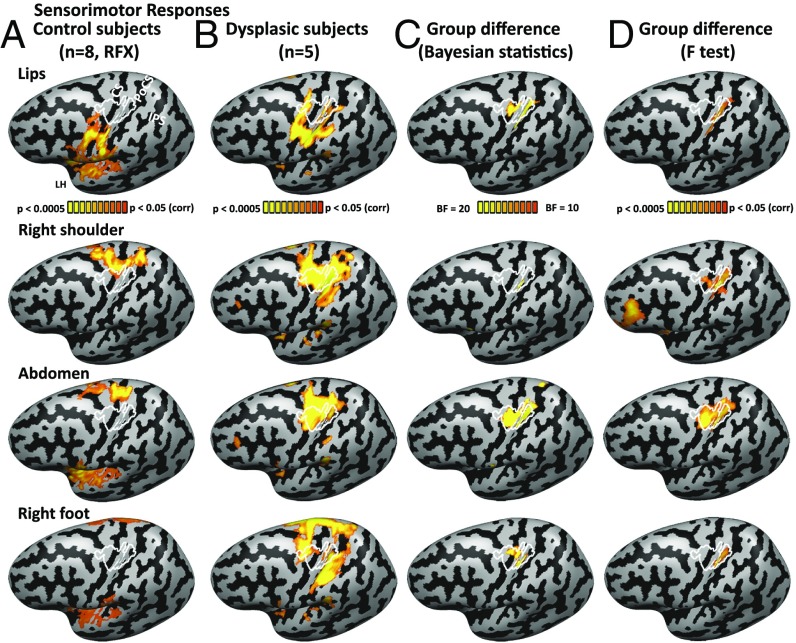Fig. 1.
Activation for multiple body parts in the sensorimotor hand area in dysplasic subjects (born without hands). (A) The activation for body part movement (contraction of the lips, right shoulder, abdomen, and right foot) in the typically developed control subject group (random effect GLM analysis; P < 0.05 corrected for multiple comparisons) is shown on the left cortical hemisphere, following the standard Penfield homunculus. The sensorimotor hand area, delineated in white, represents the core area activated by right hand movement in all of the control participants (each at P < 0.05 corrected). This area encompasses both primary somatosensory and motor areas and extends beyond them to the postcentral sulcus posteriorly and precentral gyrus anteriorly. CS, central sulcus; IPS, intraparietal sulcus; PoCS, postcentral sulcus. (B) Activation for body part movement is shown for the dysplasic individuals, born without hands (fixed effect GLM analysis, P < 0.05 corrected; see SI Appendix, Table S1 for subject upper limb structure). Movement of each of the tested body parts elicited activation in the hand-selective area to some extent, including, as previously reported, movement of the right foot. (C and D) Group difference in activation of body part movement is shown in both Bayesian analysis (C; BF10 > 10 represents strong evidence for the existence of a group difference) and frequentist statistics (D; mixed effects F test). The sensorimotor hand area is activated more by the dysplasic group for multiple body parts. Group differences extend somewhat more inferiorly in the posterior somatosensory cortex (postcentral gyrus) compared with the motor cortex, in accordance with a larger cortical representation to the upper limbs in this area (82).

